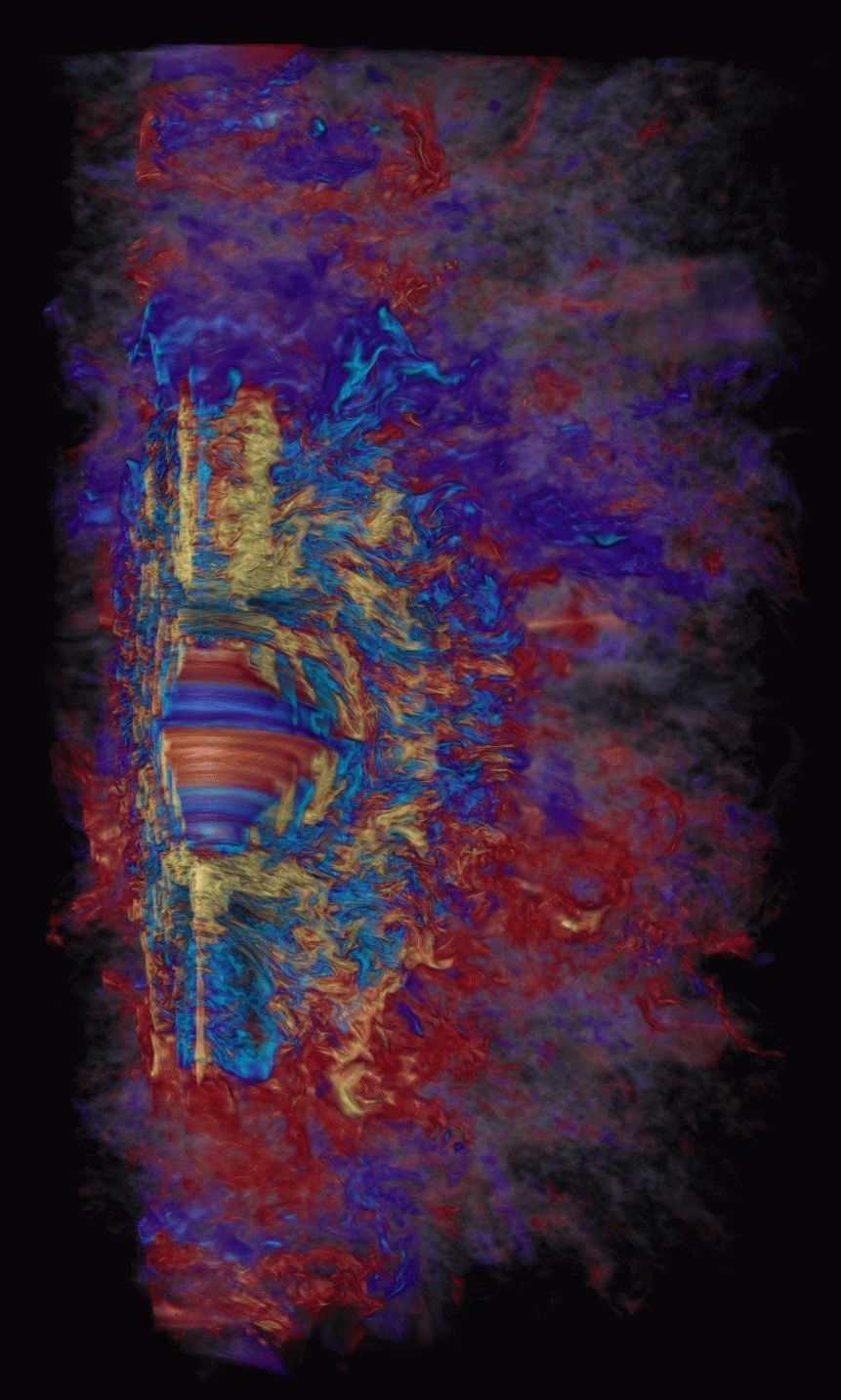A supercomputer simulation of a mere 10 milliseconds in the collapse of a massive star into a neutron star proves that these catastrophic events, often called hypernovae, can generate the enormous magnetic fields needed to explode the star and fire off bursts of gamma rays visible halfway across the universe.
The results of the simulation, published online Nov. 30 in advance of publication in the journal Nature, demonstrate that as a rotating star collapses, the star and its attached magnetic field spin faster and faster, forming a dynamo that revs the magnetic field to a million billion times the magnetic field of Earth.
A field this strong is sufficient to focus and accelerate gas along the rotation axis of the star, creating two jets that ultimately can produce oppositely directed blasts of highly energetic gamma rays.
